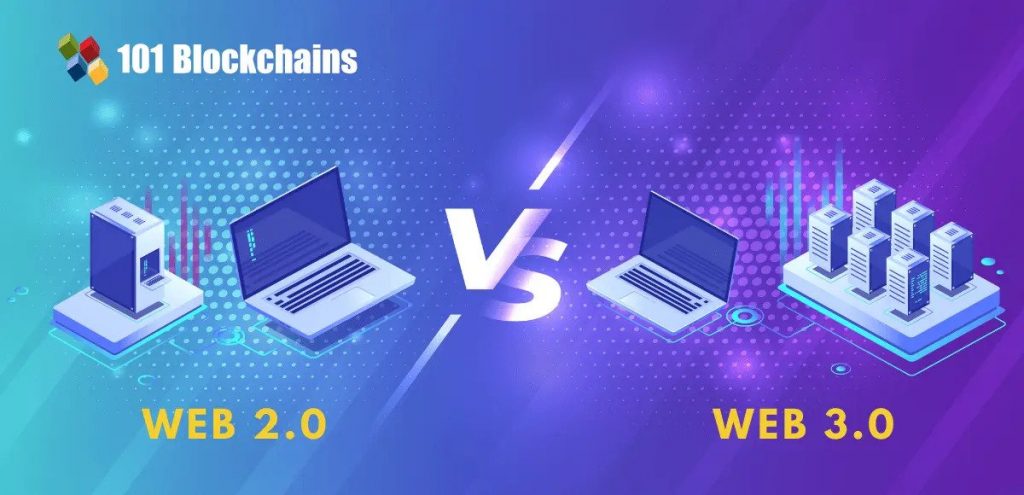
Introduction to This Article:
The evolution of the internet has given rise to a new era of the internet known as Web 3.0. This new era is a significant advancement from Web 2.0 and promises to bring about even more significant changes. In this article, we will explore Web 3.0 vs Web 2.0.
Web 3.0 vs Web 2.0 – History
Web 2.0 is the era of the internet that most people are familiar with. It was the era that saw the rise of social media, online shopping, and streaming services. A few dominant players acted as gatekeepers and largely controlled the internet in this era. These gatekeepers controlled the data and content that users accessed, and users had little control over their data.
Web 3.0 vs Web 2.0 – Evolution
Web 3.0, also known as the decentralized web, is the next phase of the internet. It is a more open and decentralized version of the internet, where users have more control over their data and content. Blockchain technology powers the current era of the internet, facilitating the creation of decentralized applications and services. This means that there are no longer any gatekeepers, and users have complete control over their data.

Web 3.0 vs Web 2.0 – Differences:
Here are some key differences between Web 2.0 and Web 3.0:
- A central authority or organization controls Web 2.0, while Web 3.0 is decentralized, providing users with complete control over their data and content.
- In Web 2.0, users have little control over their data and content, while in Web 3.0, there are no gatekeepers.
- Centralized servers power Web 2.0, while blockchain technology powers Web 3.0.
- Web 3.0 is more secure, transparent, and resistant to censorship compared to Web 2.0.
Web 3.0 vs Web 2.0 – Future:
The future of the internet lies in Web 3.0, which offers a decentralized approach where users have control over their data. As people become aware of its benefits, demand for its services will increase. Meanwhile, centralized platforms still hold relevance in the current internet landscape, but their limitations are becoming more apparent. This will likely lead to more exploration of decentralized options and the coexistence of Web 2.0 and Web 3.0. As a result, the balance of power may shift towards Web 3.0 as users become more interested in decentralized technologies.

Conclusion:
To conclude, Web 3.0 is poised to revolutionize the Internet with its decentralized structure and blockchain technology. As users gain more control over their data and content, Web 3.0 offers a more transparent and democratic experience. As a result, the future of the internet lies in Web 3.0, with even more remarkable advancements expected in the near future.
Learn More – Information Courtesy
